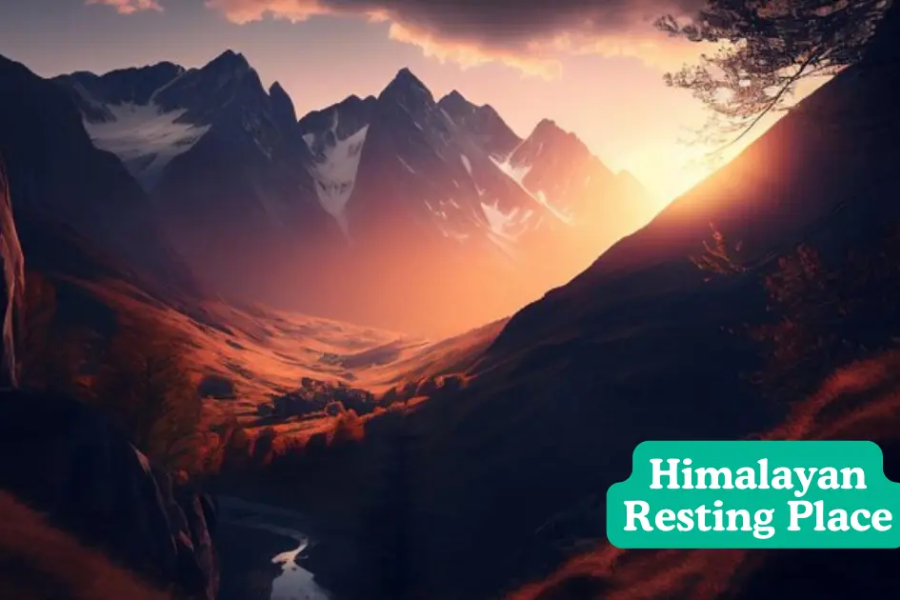The Enigma of Himalayan Resting Places and Mysterious Locations
With its difficult hints and complicated frameworks, the New York Times crossword puzzle is a notable piece of the paper. The perplexing inquiry, “What is the NYT crossword hint for Himalayan resting place?” might be found among the various signs in these riddles. We dive into the universe of crossword puzzles in this article by looking at the meaning of the NYT crossword and translating the gave signs, for example, the slippery Himalayan resting place. Nearby, we adventure through presumably the most bewildering spots in the Himalayas that glimmer interest and wonder.
Significance of Crossword Riddles
Crossword puzzles have for some time been a darling distraction for some, offering diversion, mental excitement, and, surprisingly, instructive advantages. These riddles practice the cerebrum, further develop jargon, and upgrade critical thinking abilities. Tackling a crossword puzzle includes a one of a kind mix of decisive reasoning and imagination, making it an ideal activity for keeping the psyche sharp and light-footed.
The Allure of the New York Times Crossword
The New York Times crossword stands apart for its degree of trouble and social references implanted inside its hints. It requests to a different crowd, from prepared puzzlers to tenderfoots, with its mix of challenge and commonality. The NYT crossword is eminent for its difficult pieces of information, which frequently require a blend of information, wit, and horizontal reasoning to settle. Each puzzle is carefully created to test even the most proficient solvers.
Challenge and Intricacy
The test and intricacy of the NYT crossword are essential for its appeal. Solvers are frequently expected to consider new ideas, decipher signs in different ways, and utilize rational thinking to show up at the right responses. This complex course of tackling gives a feeling of achievement as well as upgrades mental capacities.
Social References
Past simple words, the hints in the NYT crossword regularly reference writing, history, mainstream society, and recent developments. This adds an additional layer of profundity and interest to the tackling experience, interesting to a large number of interests. The crossword turns into an impression of the times, integrating contemporary issues and social peculiarities that resound with solvers.
What is a Crossword Sign?
In the domain of crossword puzzles, signs act as clues or prompts to assist solvers with recognizing the relating replies. These hints can take different structures, including direct definitions, wit, and obscure references. For instance, the expression “Himalayan resting place” in a crossword hint commonly alludes to “home,” drawing upon the symbolism of birds settling in the grandiose pinnacles of the Himalayas. This represents how crossword hints frequently depend on figurative or cooperative language to lead solvers to the right response.
Disentangling the Clue in Setting
While encountering the sign “Himalayan resting place” concerning a NYT crossword puzzle, solvers ought to consider the incorporating clues and grid segments to accumulate the normal reaction. This cycle incorporates analyzing word lengths, crossing letters, and logical counterparts or related thoughts. A blend of mastery and intuition makes handling such snippets of data a compensating experience.
Ordinary Crossword Snippets of data and Game plans
“Himalayan resting place” is just a single delineation of the swarm signs experienced in crossword puzzles. Other ordinary snippets of data consolidate references to geography, history, composing, and mind. Information on these sorts of signs can extraordinarily update one’s ability to handle confounds beneficially.
Procedures for Tending to Crossword Snippets of data
To deal with hints like “Himalayan resting place” with sureness, solvers can use various frameworks, for instance, isolating the snippet of data into its part parts, considering substitute understandings, and utilizing word connection systems. Encouraging a calculated method for managing handling can make even the most troublesome questions sensible.
Exploring Assortments in Crossword Conundrums
While the NYT crossword is esteemed for its multifaceted design, there are different various assortments of crossword puzzles available to sweethearts. These consolidate clandestine crosswords, regular more modest than ordinary enigmas, and themed puzzles dealing with different interests and capacity levels. Each assortment offers an exceptional test, intriguing to a wide horde of puzzle sweethearts.
Resources for Crossword Aficionados
For those restless to further develop their crossword-handling capacities or find new enigmas, an overflow of resources is holding on. Online stages and applications offer permission to an enormous scope of conundrums, while print circulations continue to satisfy traditionalists. These resources allow likely opportunities to practice and improvement, ensuring that solvers, things being what they are, can participate in the satisfaction of completing a puzzle.
The best technique to Advance toward Crossword Enigmas
Whether you’re a youngster or a painstakingly pre-arranged solver, pushing toward crossword puzzles with a mix of resistance, assurance, and interest is basic. Starting with straightforward signs, using crossword data bases, and looking through out changed conundrum sources can update the handling experience. Embracing the test and participating in the process are major to transforming into a competent solver.
The Enjoyment of Tending to Crossword Conundrums
In the long run, the satisfaction of breaking a troublesome clue or completing an entire crossword puzzle is unparalleled. The pride, joined with the mental activity given by these enigmas, makes them an unending #1 among fans. The outing from the essential clue to the last fill-in is a repaying experience, stacked up with previews of understanding and divulgence.
Cryptic Spots in the Himalayas You Will struggle with accepting
The Himalayas, or the Himalaya, Asia’s most critical mountain range, secludes the fields of the Indian subcontinent from the Tibetan Level. This extraordinary mountain range is home to nine of the ten most imperative tops on earth, including Mount Everest, at the Nepal-China line. The Himalayas are a wellspring of huge streams in Asia and expect a basic part in dealing with the planet’s current circumstance. Known as the Third Shaft, the Himalayas are moreover immersed with fables and legend, considered a resting place for divine creatures and the property of puzzling animals like the yeti. Coming up next are five extra otherworldly spots from the Himalayan folds that make sure to begin your advantage.
Roopkund Lake
Roopkund is a high-rise cold lake in the Indian territory of Uttarakhand. Arranged at a rise of approximately 16,470 feet, the area around the lake is uninhabited and encompassed by rock-thronw frigid masses and snow-clad mountains. The lake is comprehensively known as the “Skeleton Lake” due to the many out of date human skeletons found at its shores. These skeletons are perceptible when the snow disintegrates, uncovering remnants acknowledged to have a spot with a social occasion struck by a terrible hailstorm many years earlier. No matter what its repulsive standing, Roopkund is a charming goal and a critical voyaging spot in the Himalayas.
Gangkhar Pu
Gangkhar Puensum, the world’s most basic unclimbed mountain, is coordinated in Bhutan, with a degree of 7,570 meters (24,836 feet).No matter what a couple of tries, no one has really summited this mountain. Being home to phenomenal animals, including yetis and divine beings is acknowledged. Close by legends discuss confounding lights and unusual disturbances radiating from the mountain, adding to its persona. The inaccessibility and testing region have stayed discreet and worship.
Gurudongmar Lake
Gurudongmar Lake, arranged at a level of 5,430 meters an in the Indian area of Sikkim, is perhaps of the best lake on earth. It is considered heavenly by Buddhists, Sikhs, and Hindus. As shown by legend, Expert Padmasambhava, the coordinator behind Tibetan Buddhism, leaned toward a piece of the lake to remain defrosted during the most merciless winters, giving water to the close by people. The lake’s stunning greatness and significant significance spread the word about it a well excursion site.
Gyanganj
Gyanganj, generally called the City of Immortal Animals, is acknowledged to be arranged in a remote, confined Himalayan valley. Despite different undertakings, its cautious region has never been found. According to Buddhist convictions, Gyanganj exists in a higher perspective and should be seen by those with a karmic grip to it. It should be where enlightened animals reside, affecting the fate of mankind from their mysterious area. Alluded to by various names like Shangri-La, Siddhashram, or Shambhala, Gyanganj stays potentially of the most confusing and sought after place in the Himalayas.
Tiger’s Home Strict people group
Tiger’s Home House, or Taktsang Lhakhang, is perhaps of the most famous achievement and severe regions in Bhutan. Perched on a sheer incline 900 meters over the Paro Valley, the strict local area is acknowledged to be the reflection site of Expert Padmasambhava, who is said to have ventured out to the region on the back of a tigress. Visitors ought to embrace a troublesome outing across thick pine woods to show up at the strict local area, but the dazzling points of view and significant environment make the journey useful.
Facts:
NYT Crossword Clue: The term “Himalayan resting place” in a New York Times crossword puzzle often refers to “nest.”
Roopkund Lake: Known as the “Skeleton Lake,” located in Uttarakhand, India, it contains hundreds of ancient human skeletons.
Gangkhar Puensum: The world’s highest unclimbed mountain in Bhutan, standing at 7,570 meters, remains shrouded in mystery.
Gurudongmar Lake: Situated in Sikkim, India, this sacred lake is one of the highest in the world and is believed to have a section that never freezes.
Gyanganj: A mystical, hidden city in the Himalayas, believed to be in a higher dimension and accessible only to enlightened beings.
Tiger’s Nest Monastery: Also known as Taktsang Lhakhang, it is a sacred site perched on a cliff in Bhutan, associated with Guru Padmasambhava.
Summary:
The New York Times crossword puzzle, famous for its difficult pieces of information and social references, frequently incorporates charming prompts like “Himalayan resting place,” normally indicating “home.” Crossword puzzles, particularly the NYT rendition, offer mental excitement and instructive advantages, interesting to a wide crowd with their intricacy and social references.
The Himalayas, past being a topographical wonder, are rich with puzzling spots and legends. Roopkund Lake, known for its skeletal remaining parts, and Gangkhar Puensum, an unclimbed top, are only a couple of models. Gurudongmar Lake is a sacrosanct site with a one of a kind peculiarity of a part staying thawed all year. Gyanganj is a legendary city supposed to be in a higher aspect, open just to illuminated creatures. The Tiger’s Home Cloister is a sacrosanct site in Bhutan, known for its difficult trip and otherworldly importance.
FAQ:
What is the New York Times crossword clue for “Himalayan resting place”?
The clue “Himalayan resting place” in a New York Times crossword puzzle often refers to the word “nest.”
What is Roopkund Lake known for?
Roopkund Lake, also known as “Skeleton Lake,” is known for the hundreds of ancient human skeletons found at its shores. It is located in Uttarakhand, India, at an altitude of approximately 16,470 feet.
Why is Gangkhar Puensum significant?
Gangkhar Puensum is significant because it is the world’s highest unclimbed mountain, located in Bhutan, with an elevation of 7,570 meters. It is believed to be home to supernatural beings and has remained unclimbed due to its challenging terrain and mystical reputation.
What is unique about Gurudongmar Lake?
Gurudongmar Lake, located in Sikkim, India, is unique because it is one of the highest lakes in the world and has a portion that never freezes, even in the harshest winters. It is considered sacred by Buddhists, Sikhs, and Hindus.
What is Gyanganj?
Gyanganj, also known as the City of Eternal Beings, is a mythical and hidden city in the Himalayas believed to exist in a higher dimension. It is said to be accessible only to enlightened beings and remains undiscovered by modern technology.
What is the significance of the Tiger’s Nest Monastery?
The Tiger’s Nest Monastery, or Taktsang Lhakhang, is a sacred site in Bhutan, perched on a cliff 900 meters above the Paro Valley. It is associated with Guru Padmasambhava, who is believed to have flown to the site on a tigress. The monastery is a popular pilgrimage site and offers breathtaking views and spiritual significance.
Explore trending stories and events on EnglandTimes.uk.






